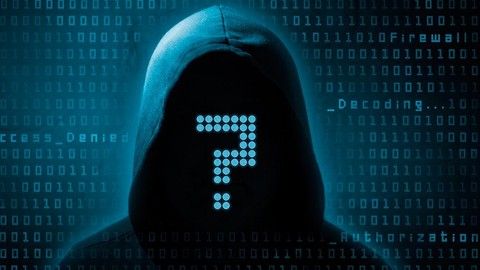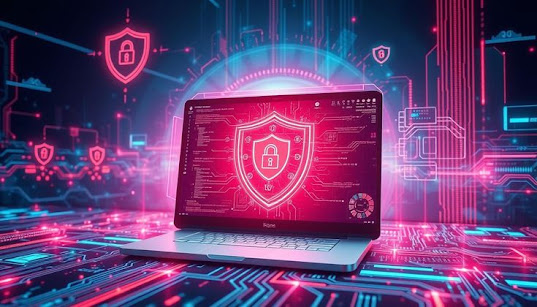The Rise of AI Hackers: How to Defend Against Machine-Led Attacks
The Rise of AI Hackers: How to Defend Against Machine-Led Attacks
As we move deeper into the digital frontier of 2025, artificial intelligence is no longer just a tool for productivity or entertainment — it's a double-edged sword. While AI brings innovation and convenience, it is also becoming the most sophisticated weapon in the hands of cybercriminals. This blog explores the evolving threat landscape of AI hackers and provides an in-depth guide to defending against machine-led cyberattacks.
A. Understanding AI Hackers: What Are They?
AI hackers are cyber attackers who use artificial intelligence to automate, accelerate, and optimize their hacking efforts. Rather than relying solely on human intelligence, these attackers deploy AI systems that can:
- Automatically scan for system vulnerabilities
- Craft adaptive phishing campaigns
- Bypass traditional firewalls using behavioral mimicry
- Exploit data using real-time pattern analysis
These systems can operate 24/7, learn from failed attacks, and even evolve their tactics in real time — making them a formidable threat to traditional cybersecurity protocols.
B. How AI Is Reshaping the Threat Landscape
Cyberattacks used to follow predictable patterns. In 2025, those patterns are being rewritten by generative AI, deep learning, and reinforcement models. Here’s how AI is changing the game:
1. Automated Vulnerability Discovery
AI can now analyze large amounts of code to detect vulnerabilities faster than human penetration testers. Tools like CodeQL and open-source NLP models are used to identify zero-day exploits before they’re disclosed.
2. Deepfake and Voice Synthesis Attacks
AI-generated audio and video are now being used to impersonate CEOs, managers, and loved ones to bypass identity verification systems — a new form of social engineering that’s scarily effective.
3. Intelligent Malware
Malware powered by AI can change its behavior based on the environment it enters, hiding its operations until it's safe to strike. It can detect sandbox environments and delay execution to bypass analysis tools.
4. Adaptive Phishing Campaigns
Machine learning is used to analyze user behavior and personalize phishing emails, making them nearly indistinguishable from legitimate communication.
C. Real-World Examples of AI-Powered Attacks
1. Deepfake CEO Scam
In 2024, a multinational firm was tricked into transferring $25 million after a fraudster used AI to clone the voice and video of the CEO in a Zoom call.
2. AI-Powered Botnet Attack
An AI-powered botnet named "DarkNetEcho" adapted its attack patterns across IoT devices in over 70 countries, avoiding detection for weeks before being discovered.
3. AI-Generated Phishing Sites
Cybercriminals now use AI to instantly clone and modify websites, creating phishing sites that adapt their language and layout based on the user's region and browsing behavior.
D. Defending Against Machine-Led Cyberattacks
Fighting AI with AI is not just a trend — it’s a necessity. Here's how cybersecurity strategies must evolve in 2025:
1. Deploy AI-Based Defenses
- Behavioral Analytics: Monitor and learn from user activity to spot anomalies in real time.
- AI Intrusion Detection Systems: These systems flag suspicious behavior dynamically rather than relying on known signatures.
- Automated Threat Hunting: Use AI to scan systems and network logs continuously for indicators of compromise (IoCs).
2. Embrace Zero Trust Architecture
Trust no device, user, or session by default — verify everything. Zero Trust networks are essential when defending against AI bots that can mimic human behavior.
3. Update Your Security Playbook
Standard firewalls and antivirus software won’t cut it. Defense must now include:
- AI-driven endpoint protection
- Real-time threat intelligence integration
- Frequent red teaming and penetration testing
4. Employee Training with AI Simulation
Conduct phishing simulations using AI to replicate realistic scenarios. Training must keep up with the evolving nature of threats.
E. Role of Government and Regulation
As AI becomes more powerful, government involvement is crucial. In 2025, many countries are introducing frameworks like:
- AI Use Audits: To ensure ethical and secure implementation of AI
- Mandatory Cyber Hygiene Laws: For businesses handling sensitive user data
- AI-Powered Threat Sharing Platforms: National and international collaboration hubs that use AI to detect and share cyber threats
“The threat is not just individual hackers anymore. We’re facing AI-driven operations that mimic state-level precision.” – Cybersecurity Analyst, 2025
F. Future Outlook: What Lies Ahead?
As AI models grow in complexity and accessibility, the gap between attackers and defenders may widen — unless we invest heavily in innovation. The future may bring:
- AI agents that automatically patch vulnerabilities in real-time
- Decentralized cybersecurity networks using blockchain and federated AI
- Legally mandated AI-ethics integration into cybersecurity tools
Vigilance, innovation, and collaboration will be key to survival in this AI-driven battlefield.
G. Final Thoughts: Stay Smart, Stay Secure
The rise of AI hackers is not a distant threat — it is happening now. From phishing emails to nation-state cyberattacks, AI is being wielded with alarming sophistication. But with the right tools, awareness, and adaptive strategies, organizations and individuals can stay one step ahead.
Defensive AI, continuous learning, and robust digital hygiene will be our best defense against the new generation of threats. The key message is simple: **don’t fight automation with manual effort. Arm yourself with intelligent defenses.**





Comments
Post a Comment